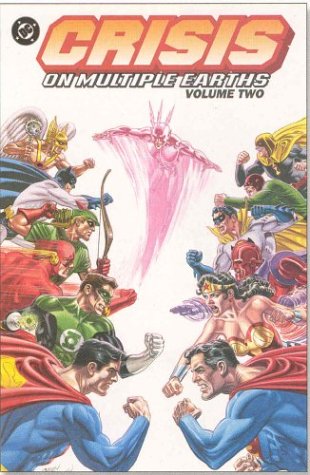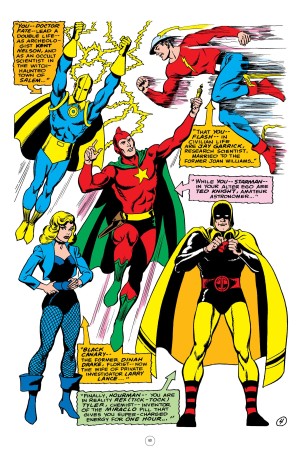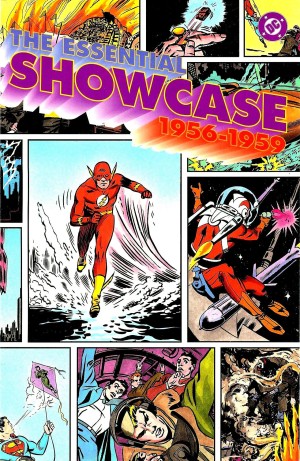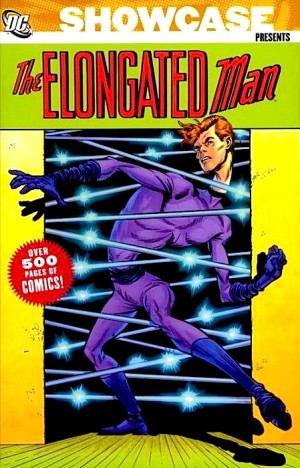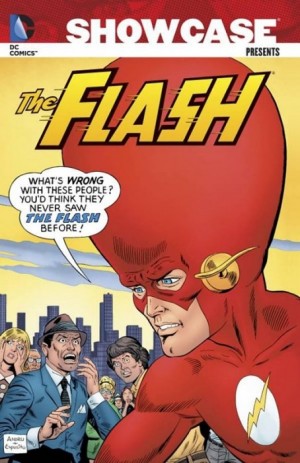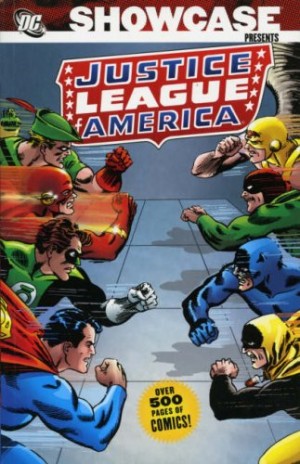Review by Karl Verhoven
This second graphic novel reprinting the Justice League of America’s annual team-up with their alternate Earth counterparts the Justice Society sees out the 1960s. It’s not pretty. Even Martin Pasko in his informative introduction struggles to avoid negative comments.
Gardner Fox, who writes the both the first and second of these two part tales introduces the occasional interesting idea, but they’re swamped in mediocrity. The opener establishes that the Justice Society’s Earth is roughly twenty years ahead of that occupied by the Justice League, which has a narrative attraction. The JSA, once cemented as icons of the past, could be reconfigured as occupying a technologically advanced world. In practice, there’s no evidence of this, and the idea is merely the method of introducing an adult version of Robin, a thrill that’s long since departed. The remainder is Fox profoundly uncomfortable in 1967 with the prevailing lightness instituted by Batman’s astonishingly successful TV show, although at the time a decision to have a JLA issue only featuring the JSA until the final pages was brave, and repeated the following year. It’s also the final team-up drawn by Mike Sekowsky, whose quirky style has never been universally appreciated.
His replacement is Dick Dillin, another under-appreciated artist. He’s a consummate storyteller, prioritising absolute clarity, and whether inked by Sid Greene or Joe Giella, there’s a crisp style that later evaporated. After initially mimicking Sekowsky’s close-up panels, the later stories show Dillin taking his own approach.
Fox’s departing gift before leaving the JLA was to upgrade another 1940s hero, the Red Tornado, now a spinning android. There couldn’t have been a greater scripting contrast adopted by Fox’s successor Denny O’Neil, who dispensed with the gimmicks and created character-based plots. He’s since confessed to being ill at ease with the grand dramatic scale demanded by the Justice League, but his opening teaming of the JSA and JLA is by far the best in this collection. That’s despite a loopy cosmic villain labelled as a manic depressive, a bizarre story convenience in which the JLA ignore the Red Tornado for two weeks, and a total lack of subtlety “When positive matter from our universe as much as touches negative matter it causes an explosion that makes an H-Bomb look like a firecracker!” Thanks for the update Green Lantern. Will we need to know this later?
What O’Neil conveys well is character. This may well have been the first time any Justice Society members displayed a personality beyond cheery heroism. The involvement of Black Canary’s husband Larry Lance is a fine touch impacting on the plot, and Canary’s transfer to the Justice League began to address Wonder Woman’s tokenism.
Sadly, while attempting to push some boundaries, O’Neil’s second JLA/JSA teaming is really poor. There’s a confusing plot resting on the heroes present on both Earths, disaster conveniently applying to strained counterparts such as Dr Mid-Nite and Batman, and a re-run of events some might remember from Volume One. The sole startling aspect is addressed only in passing as the ordinary public on Earth One briefly view their other dimensional counterparts.
A nice concluding touch is to present excerpts from the letter columns of the time commenting on the stories reprinted, some from people who’d later write comics themselves. It’s why Pasko can be discreet in his introduction. He’d already demolished the mediocrity decades previously. Don’t worry, though, Volume Three is an improvement.
